
| R. Kenny Jones1 David Charatan1 Paul Guerrero2 Niloy J. Mitra2,3 Daniel Ritchie1 |
| 1Brown University 2Adobe Research 3University College London |



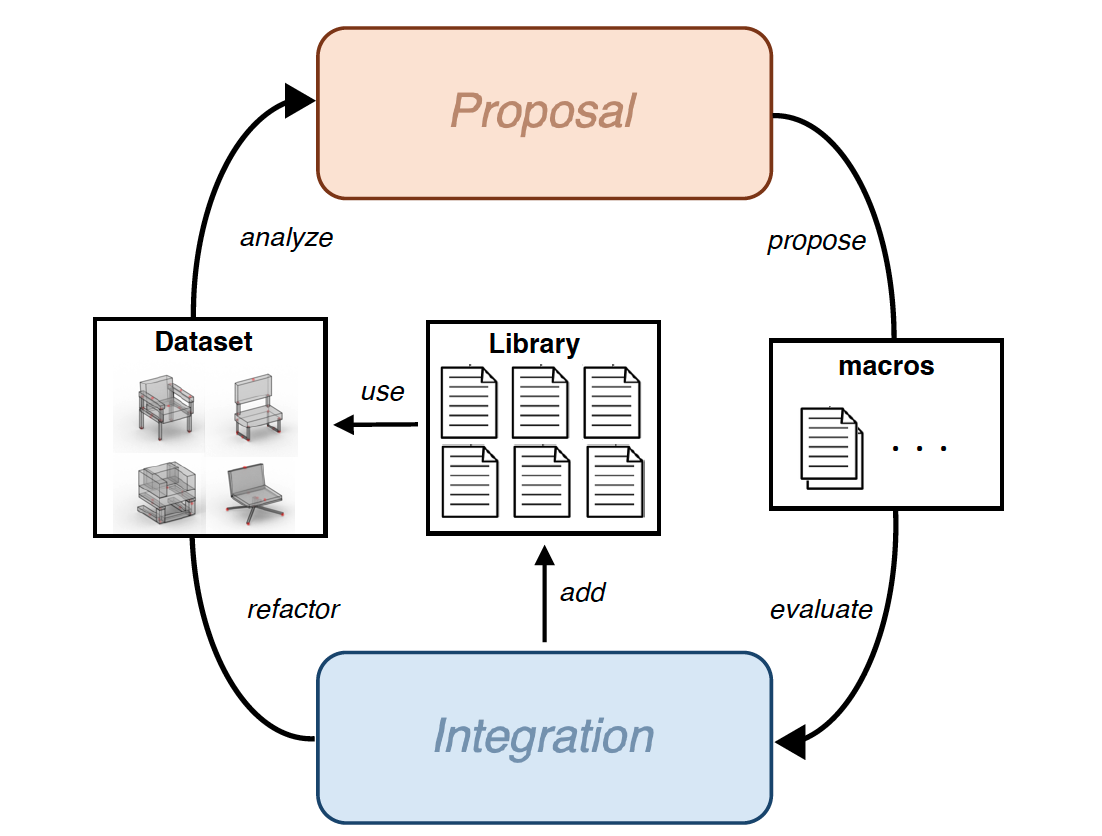

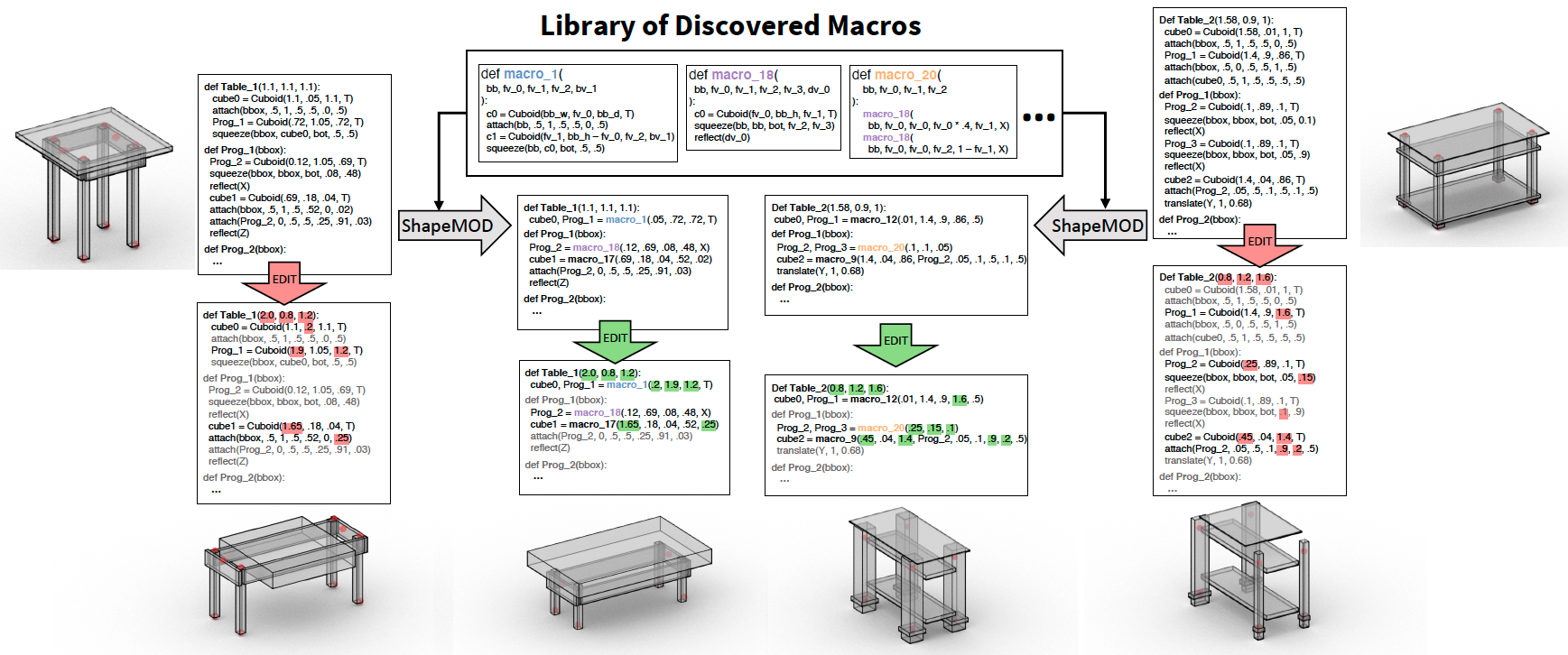
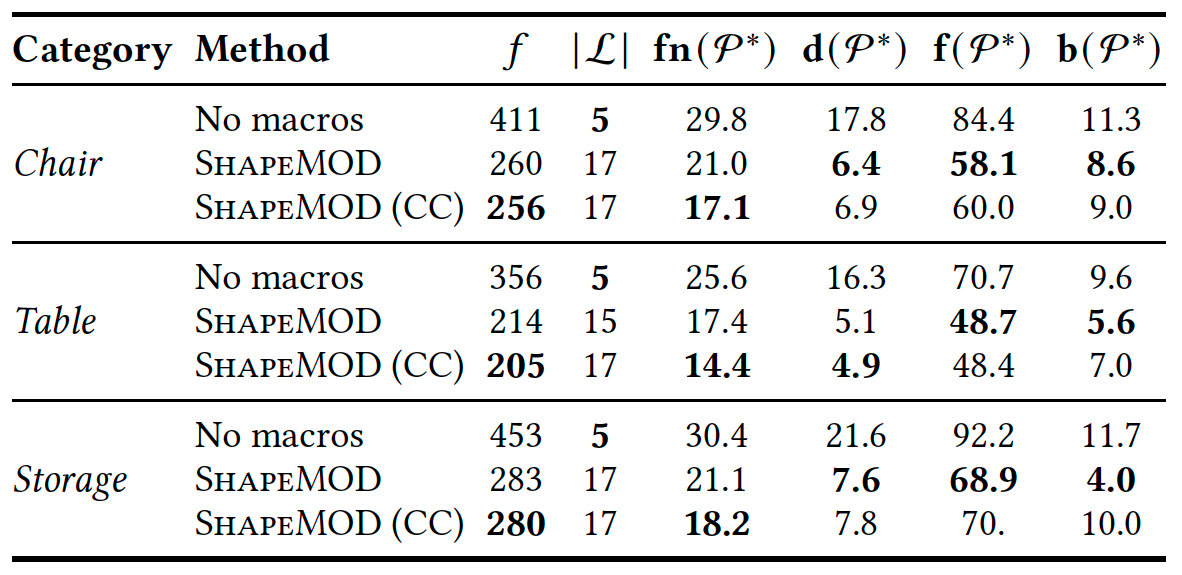
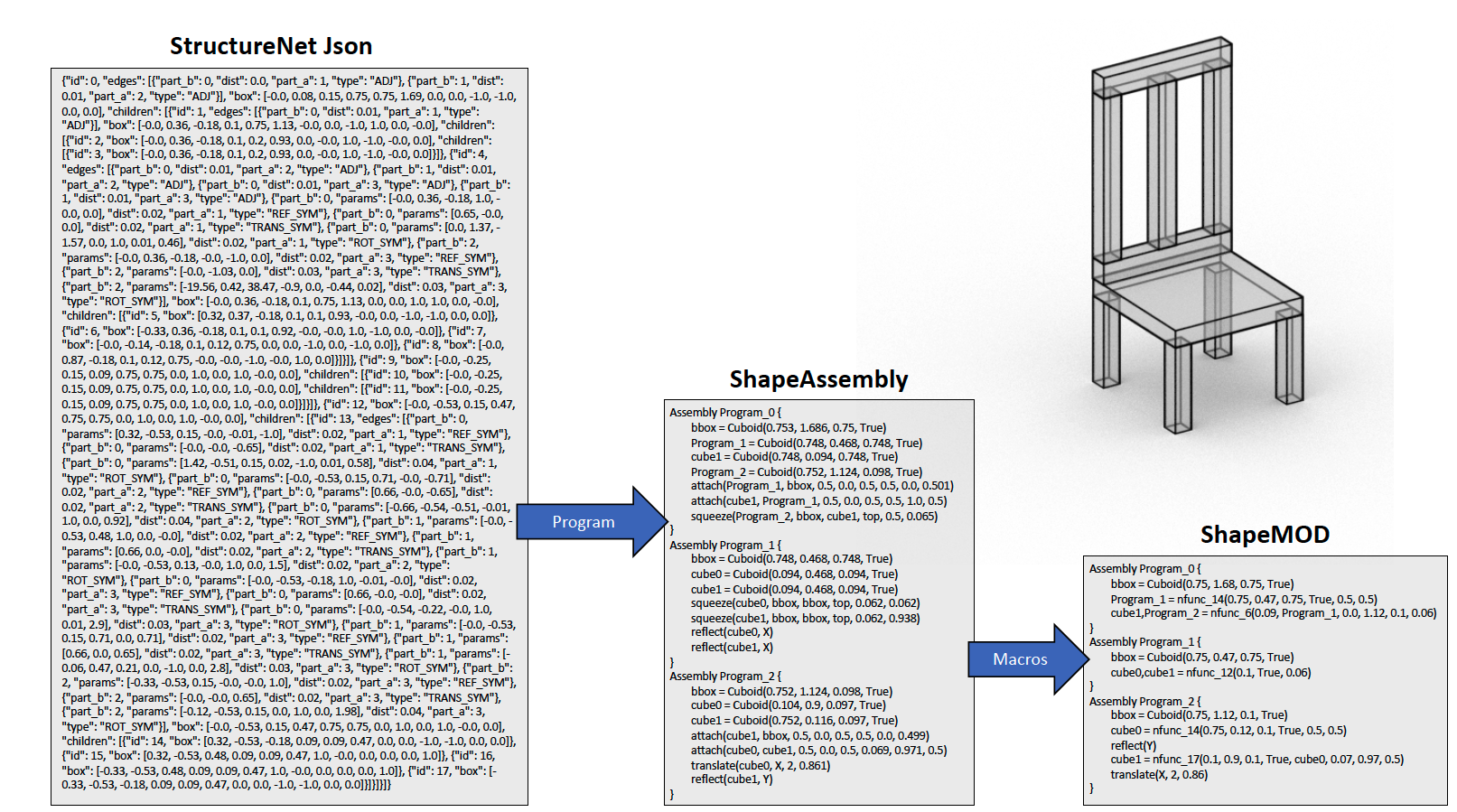
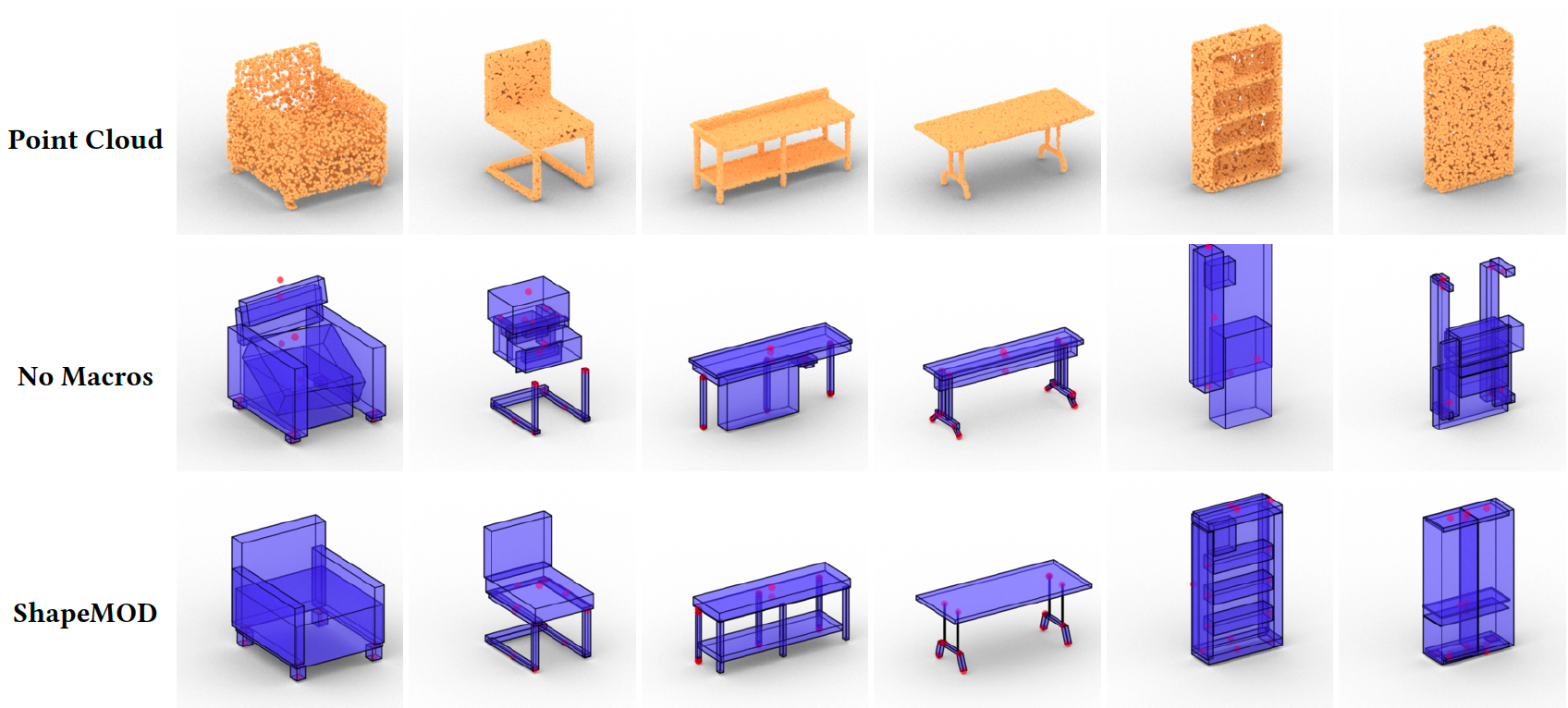
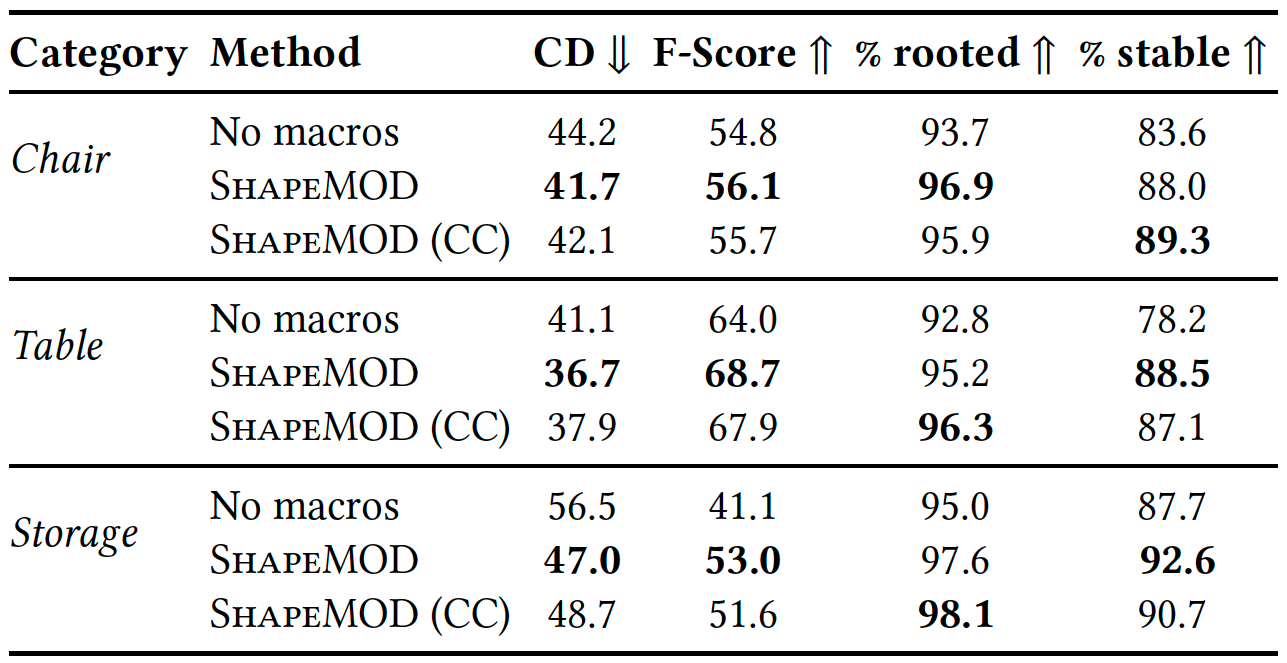
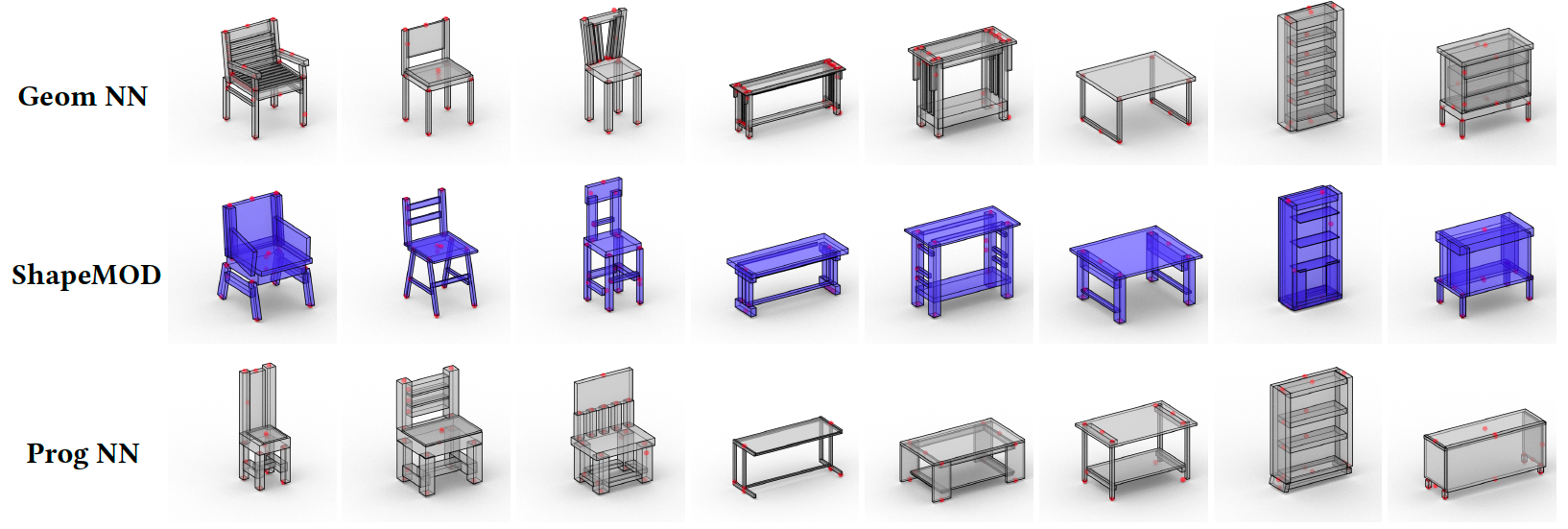

@article{jones2021shapeMOD,
title={ShapeMOD: Macro Operation Discovery for 3D Shape Programs},
author={Jones, R. Kenny and Charatan, David and Guerrero, Paul and Mitra, Niloy J. and Ritchie, Daniel},
journal={ACM Transactions on Graphics (TOG)},
volume={40},
number={4},
year={2021},
publisher={ACM},
address = {New York, NY, USA},
articleno = {153}
}